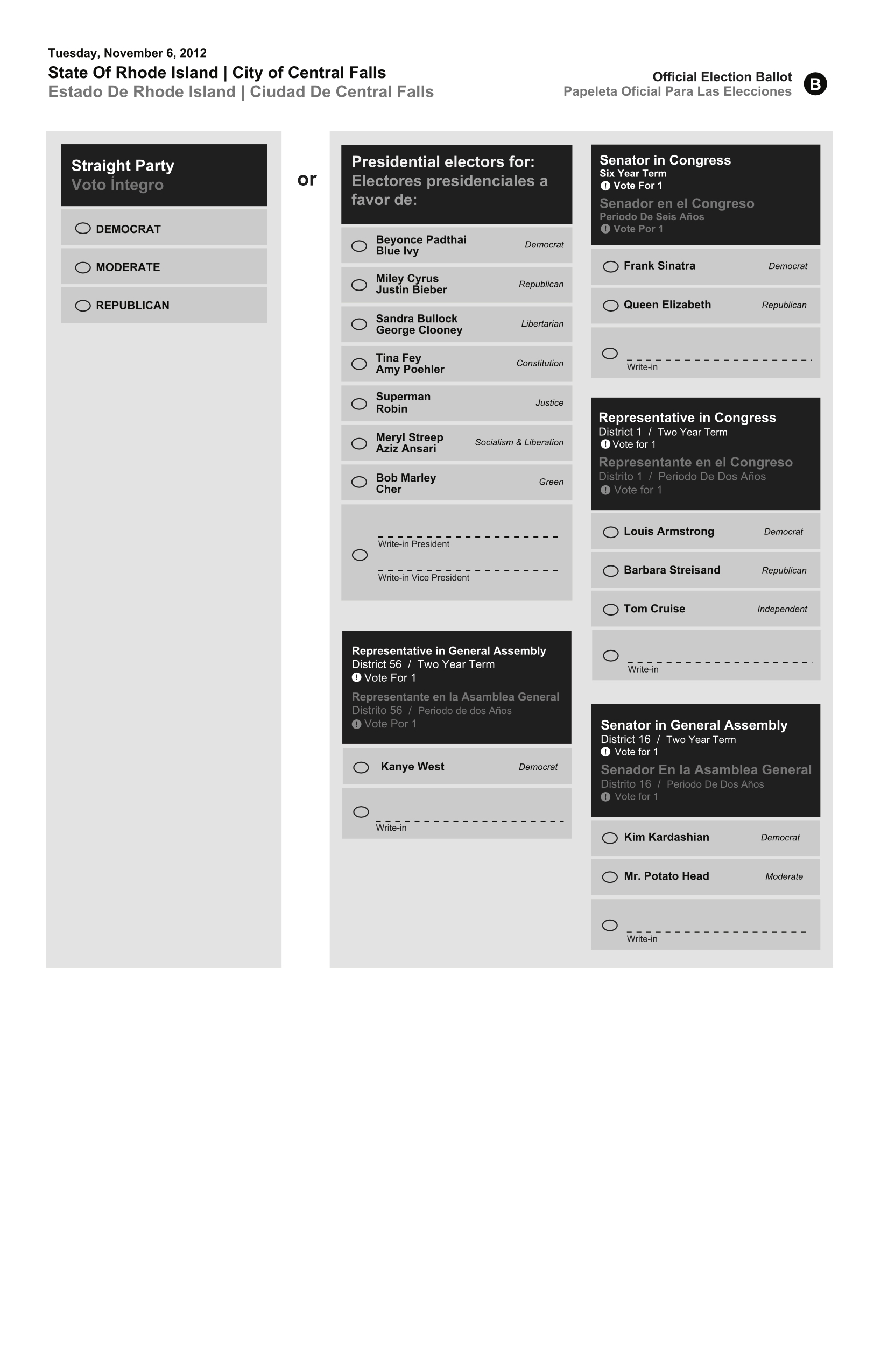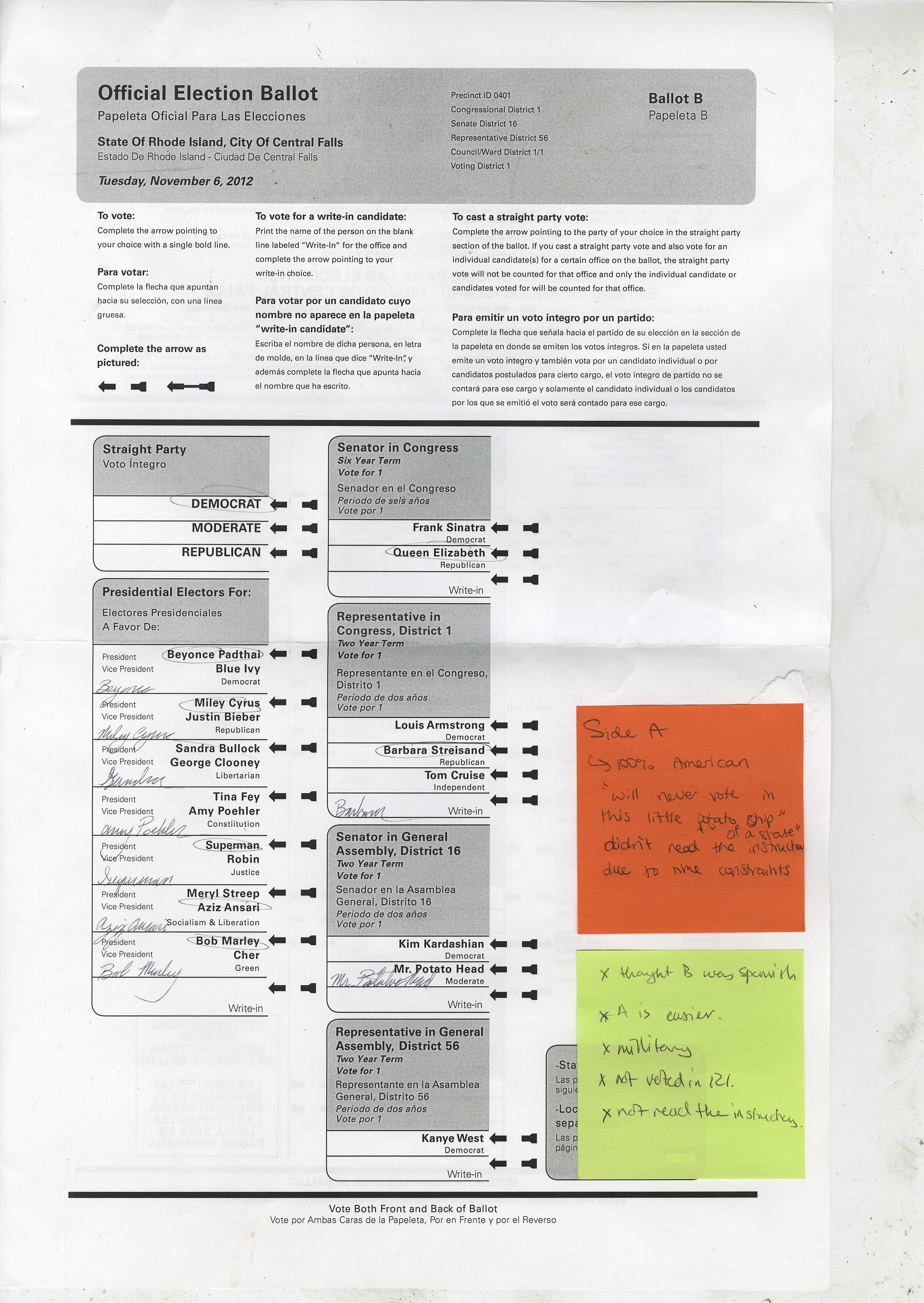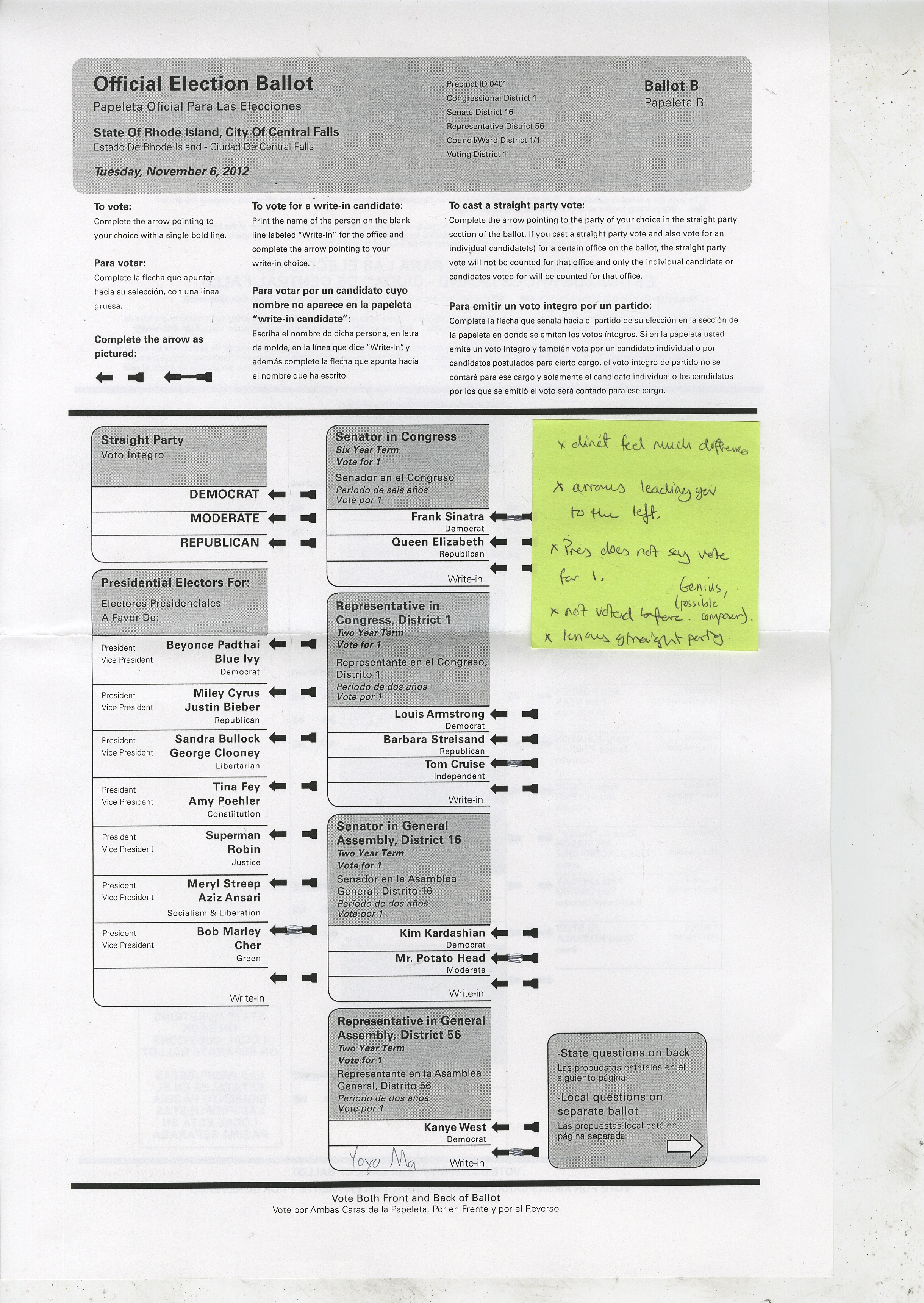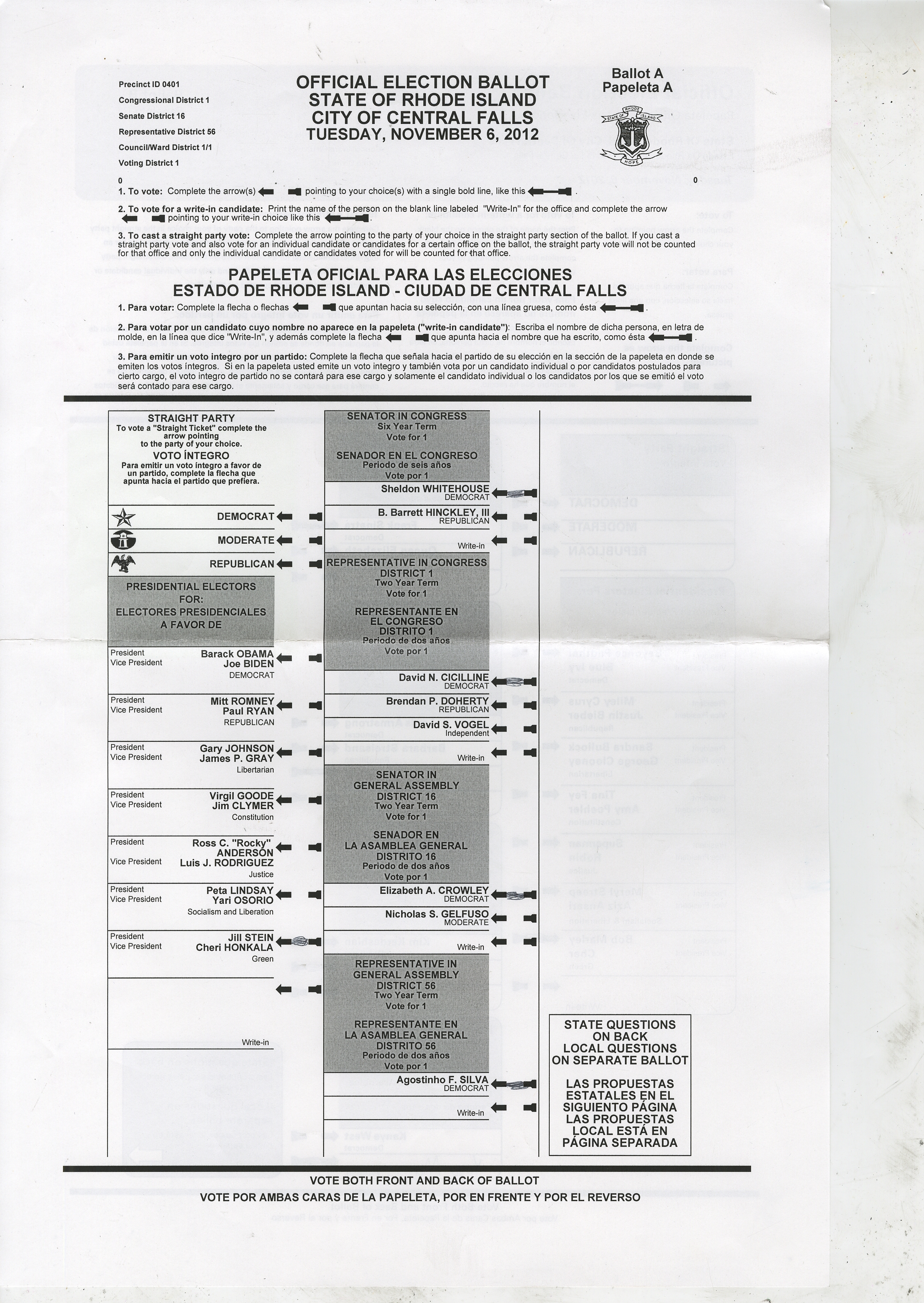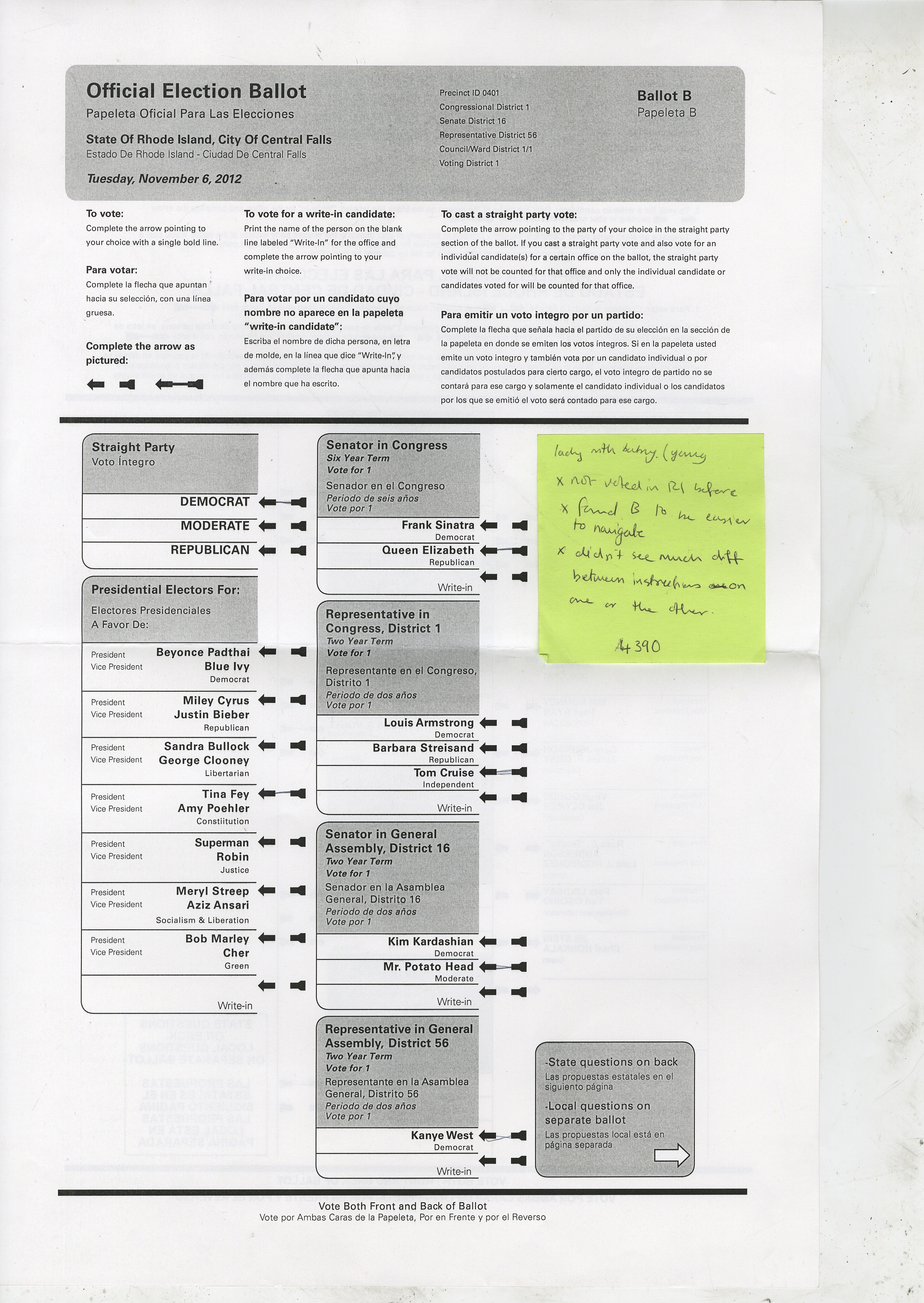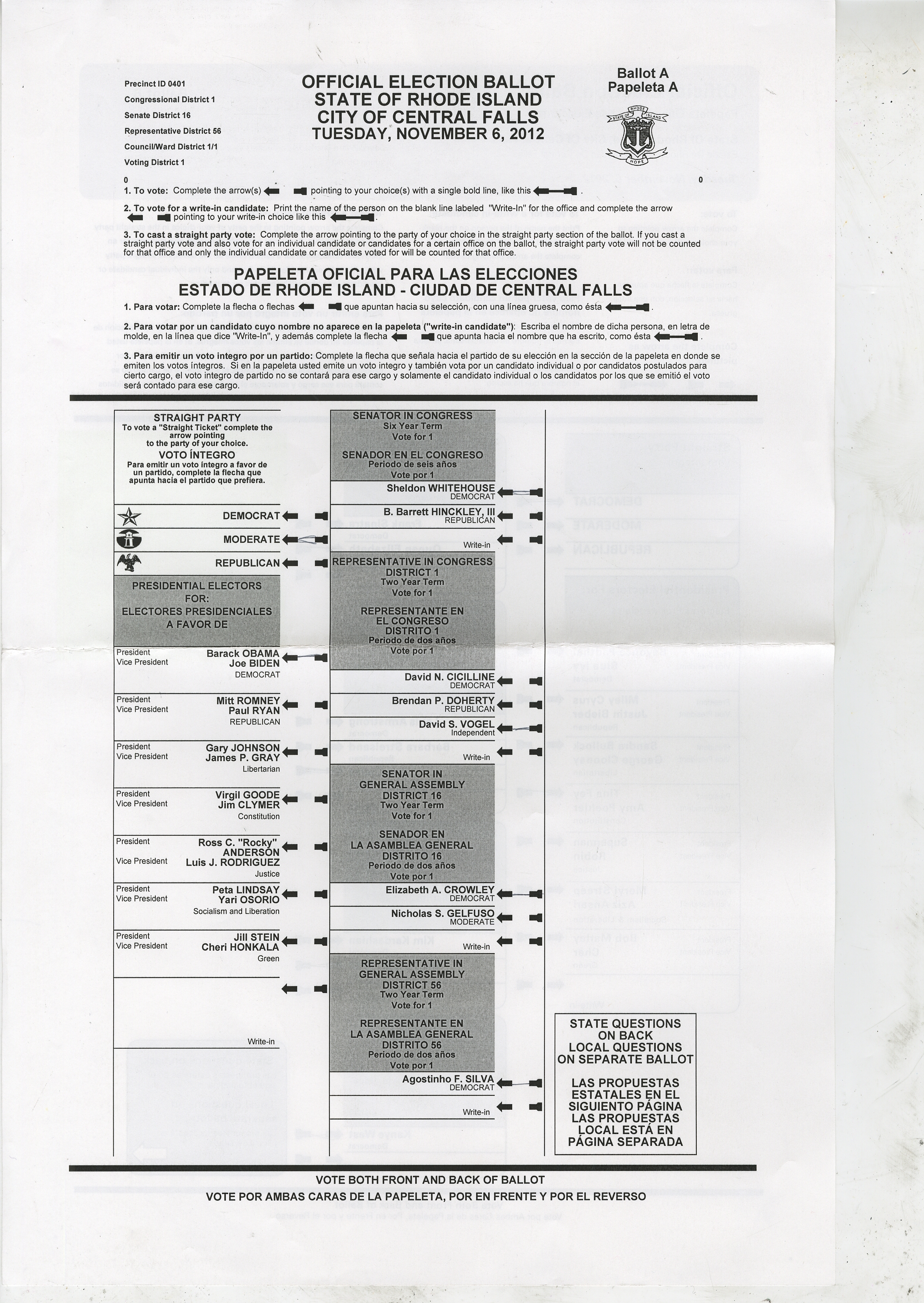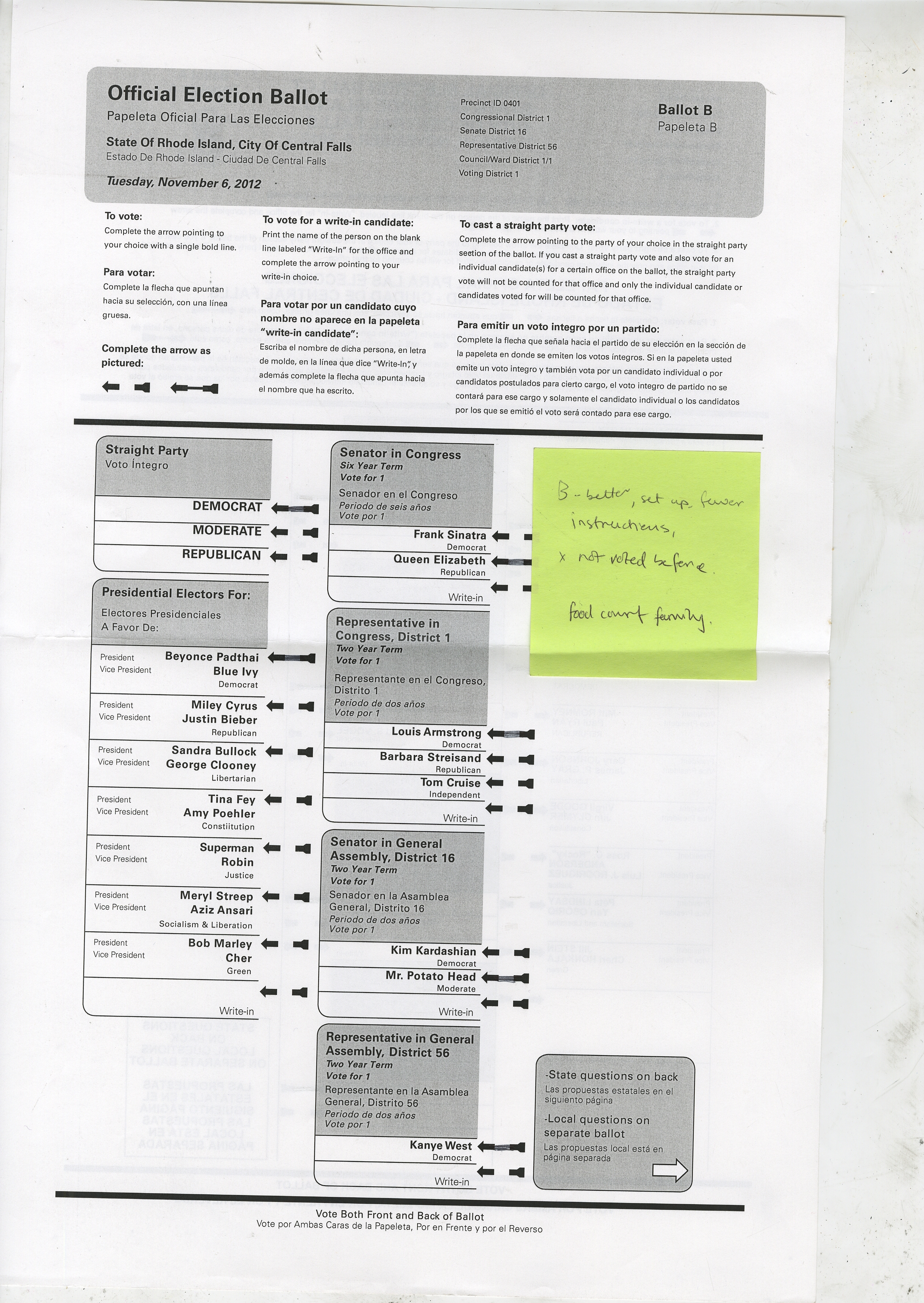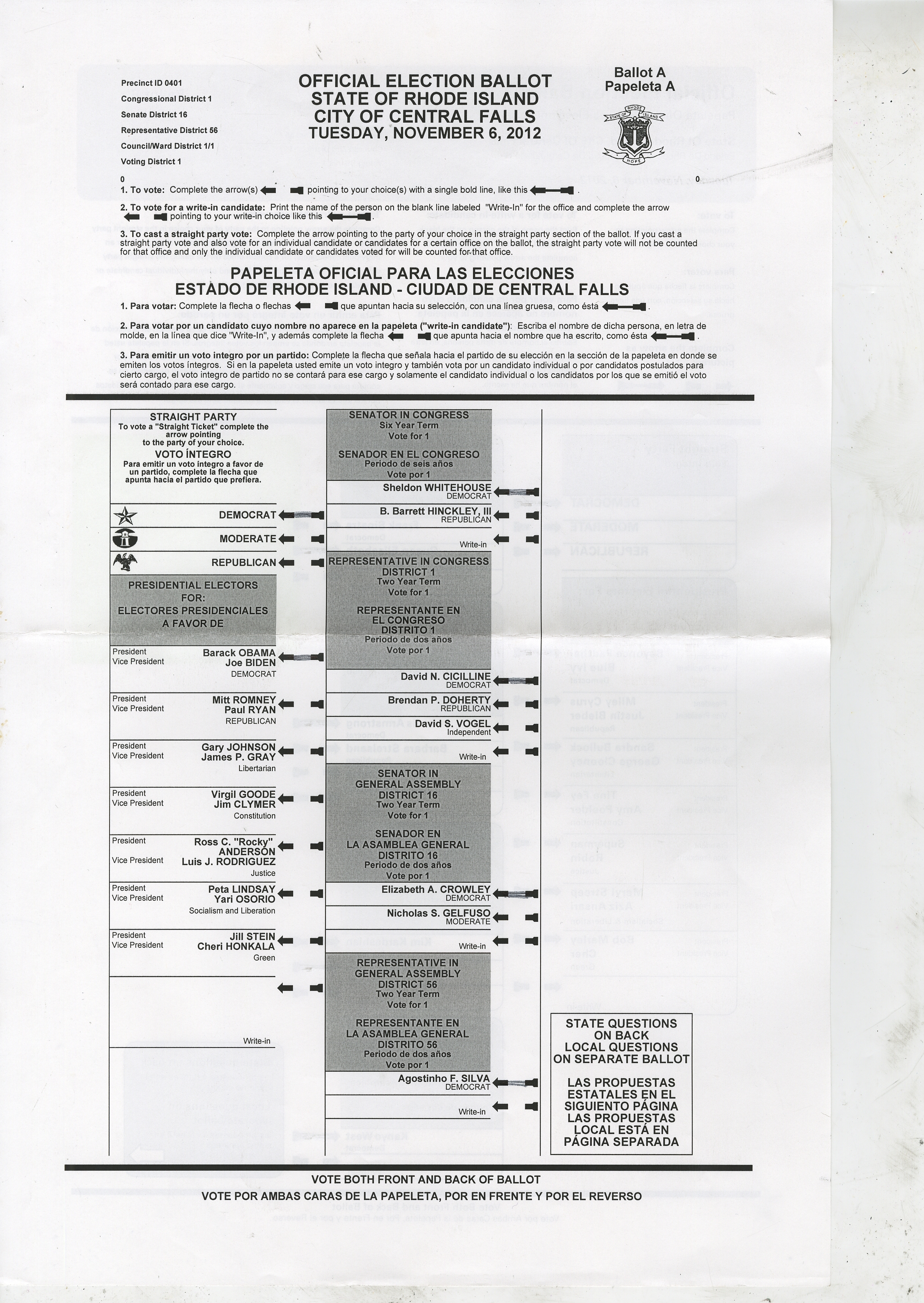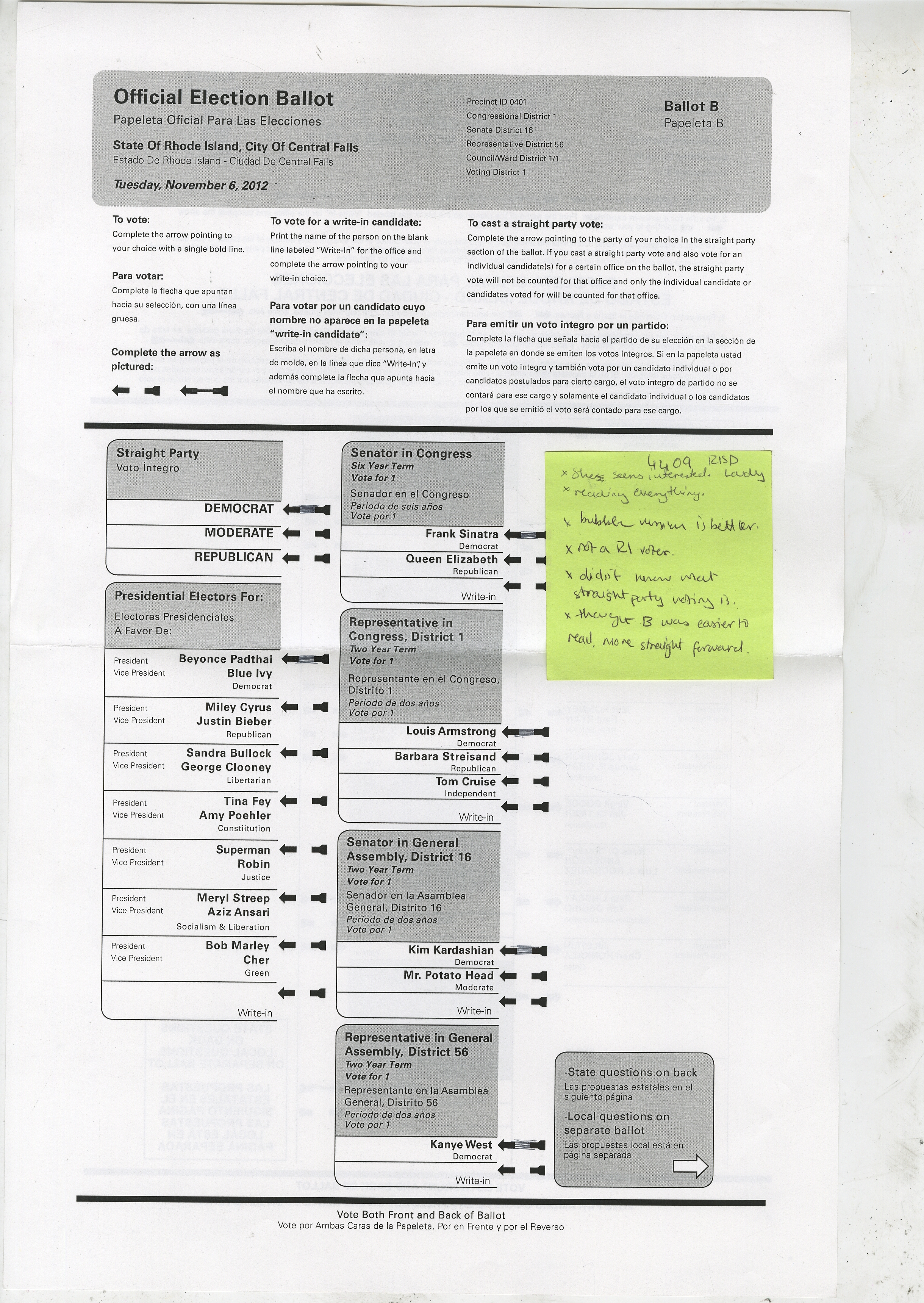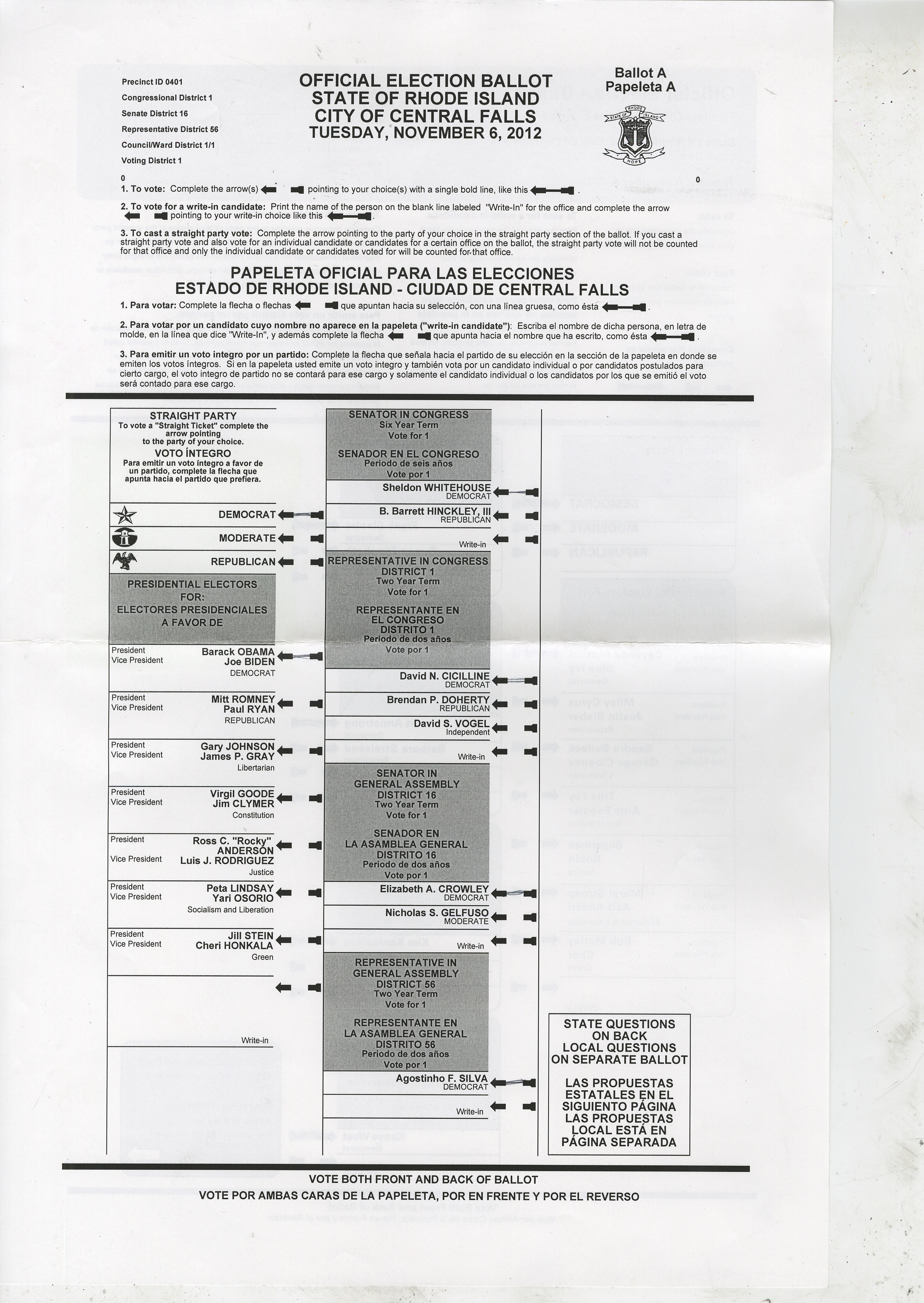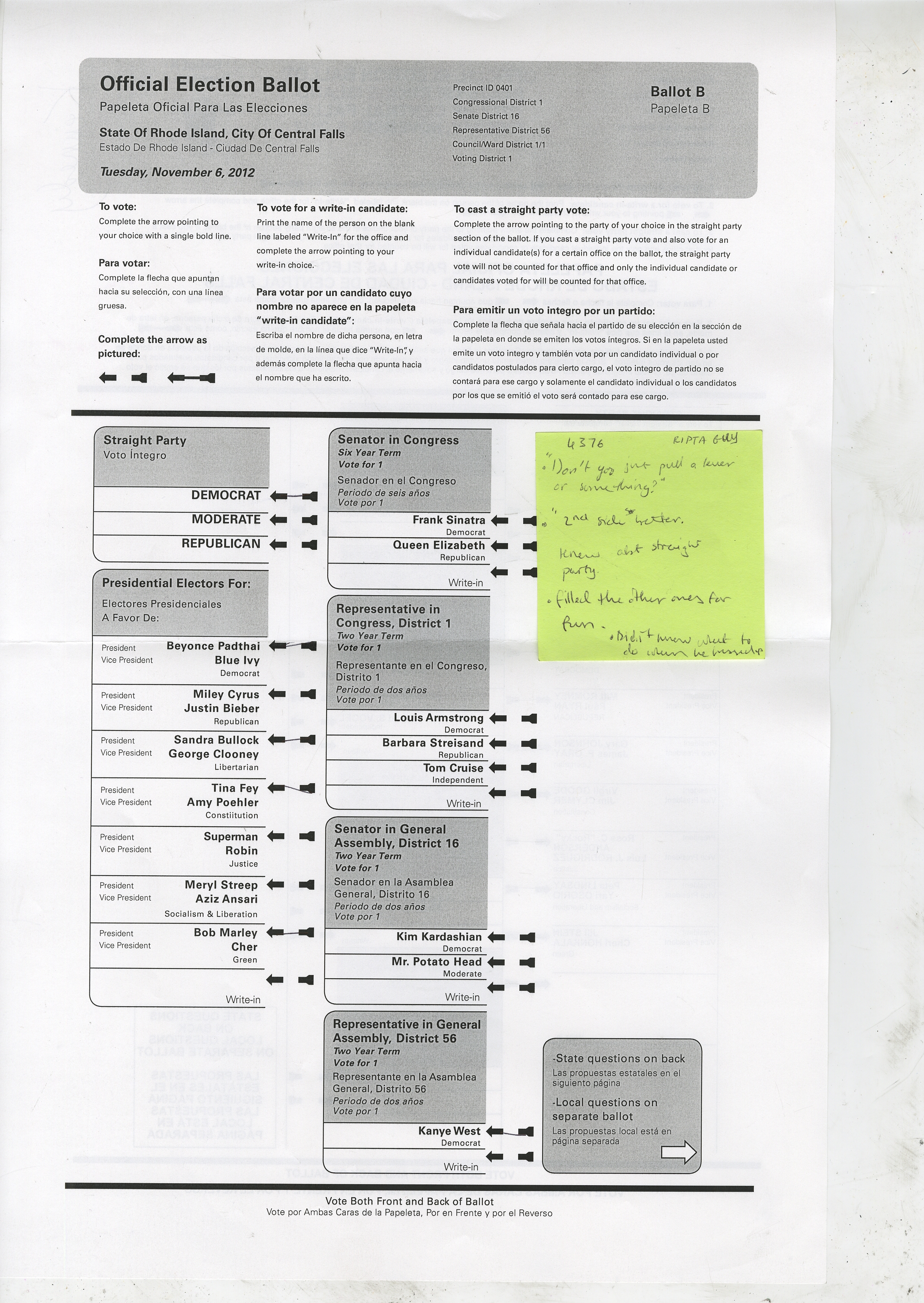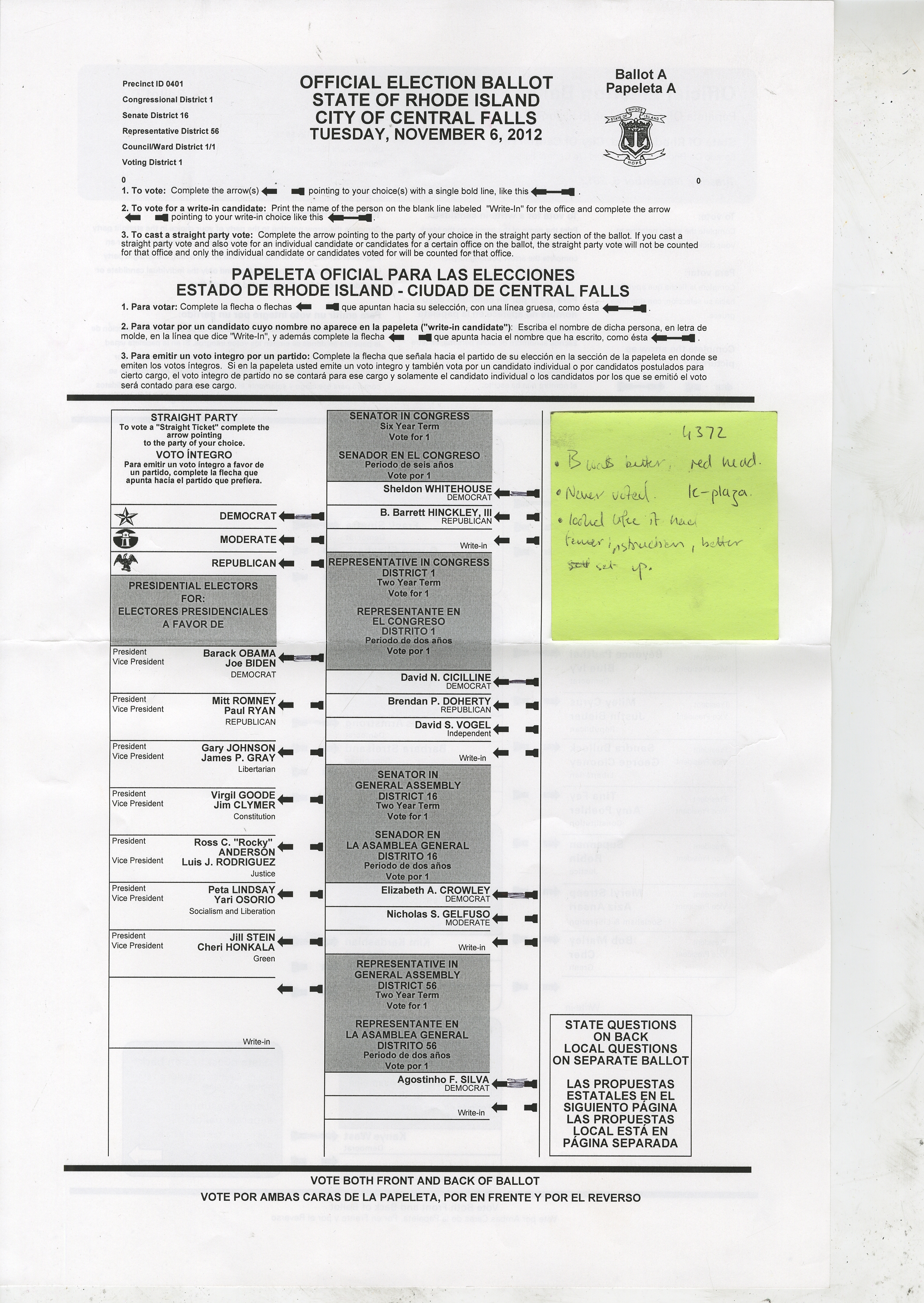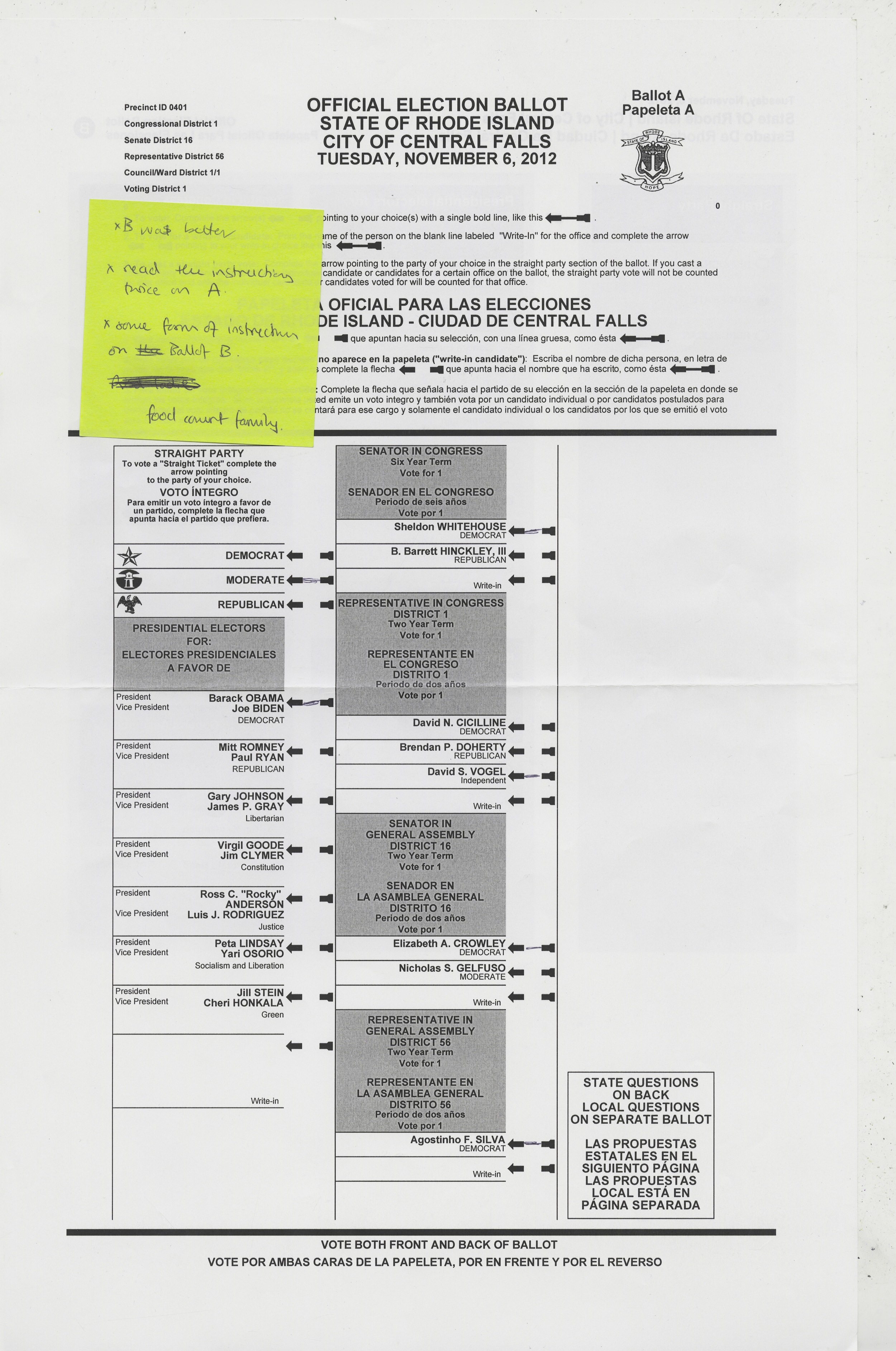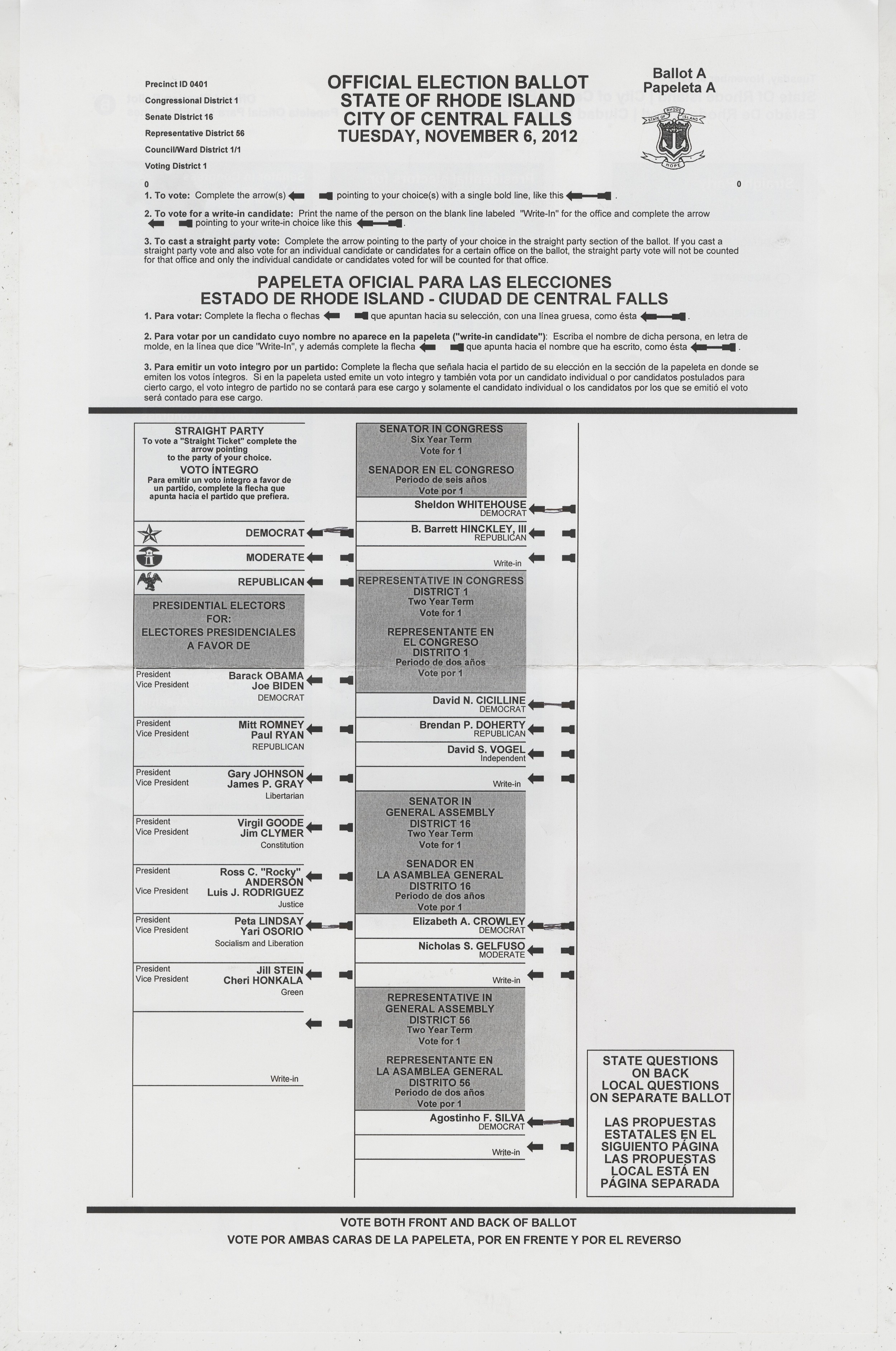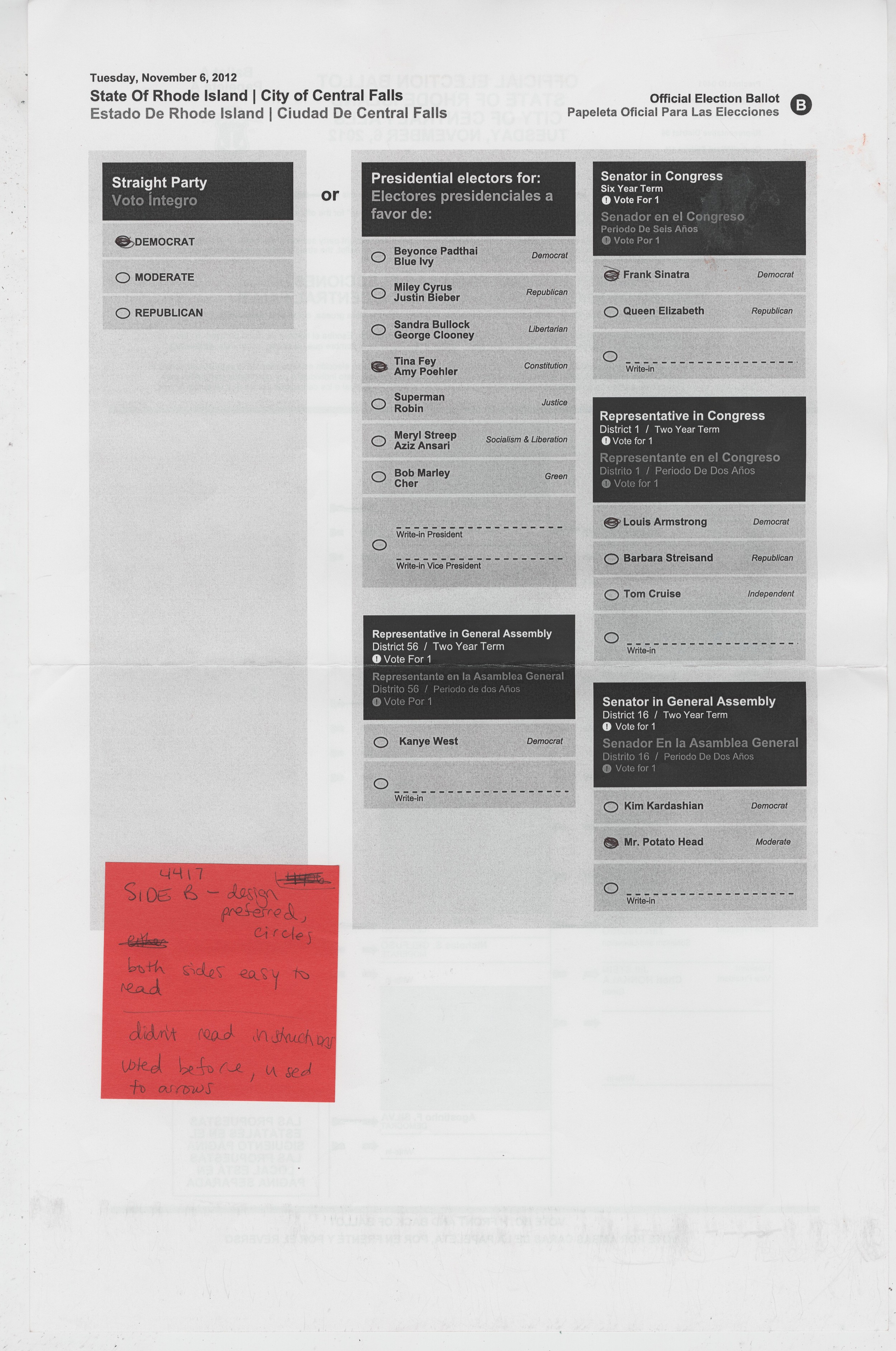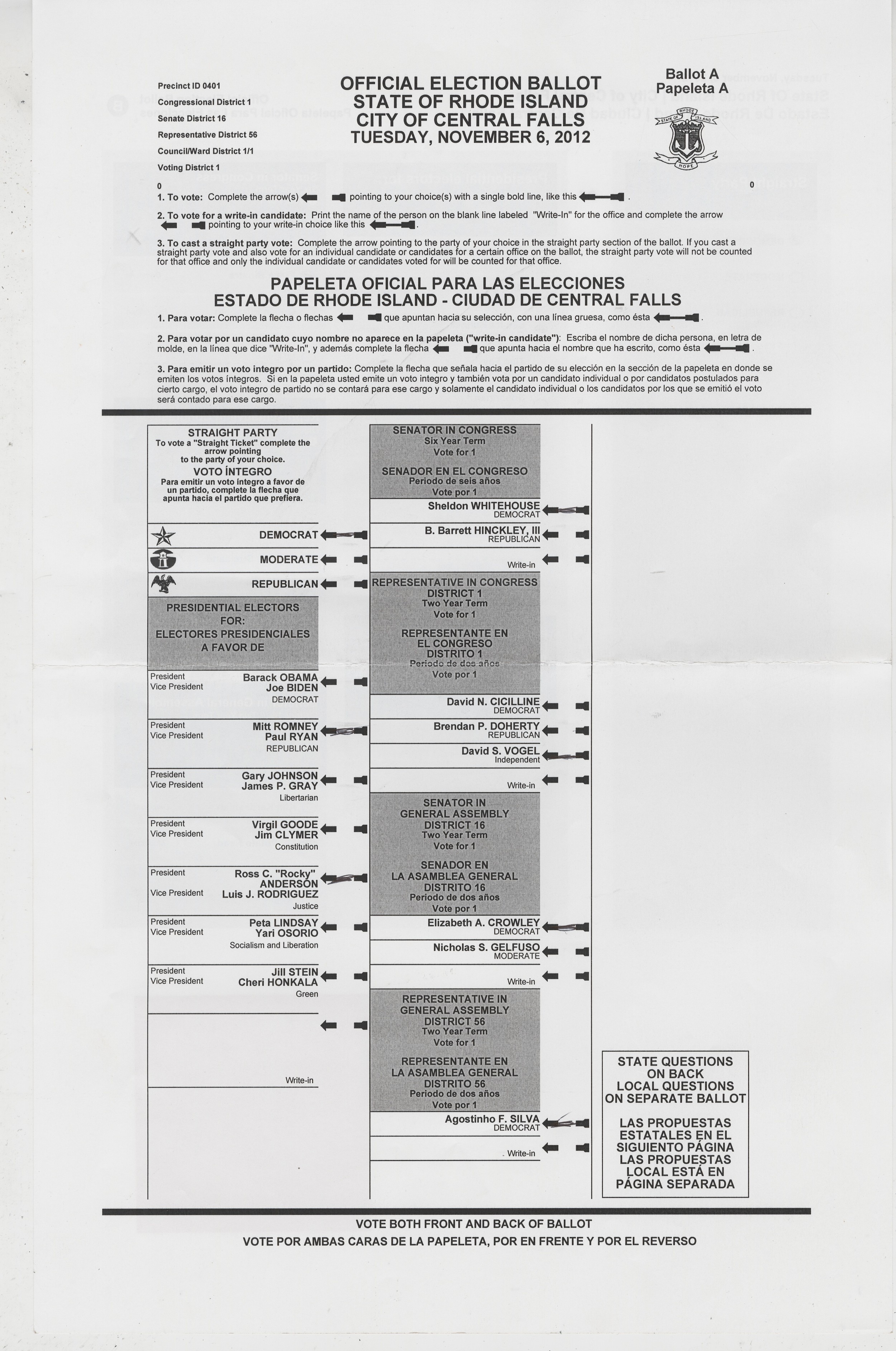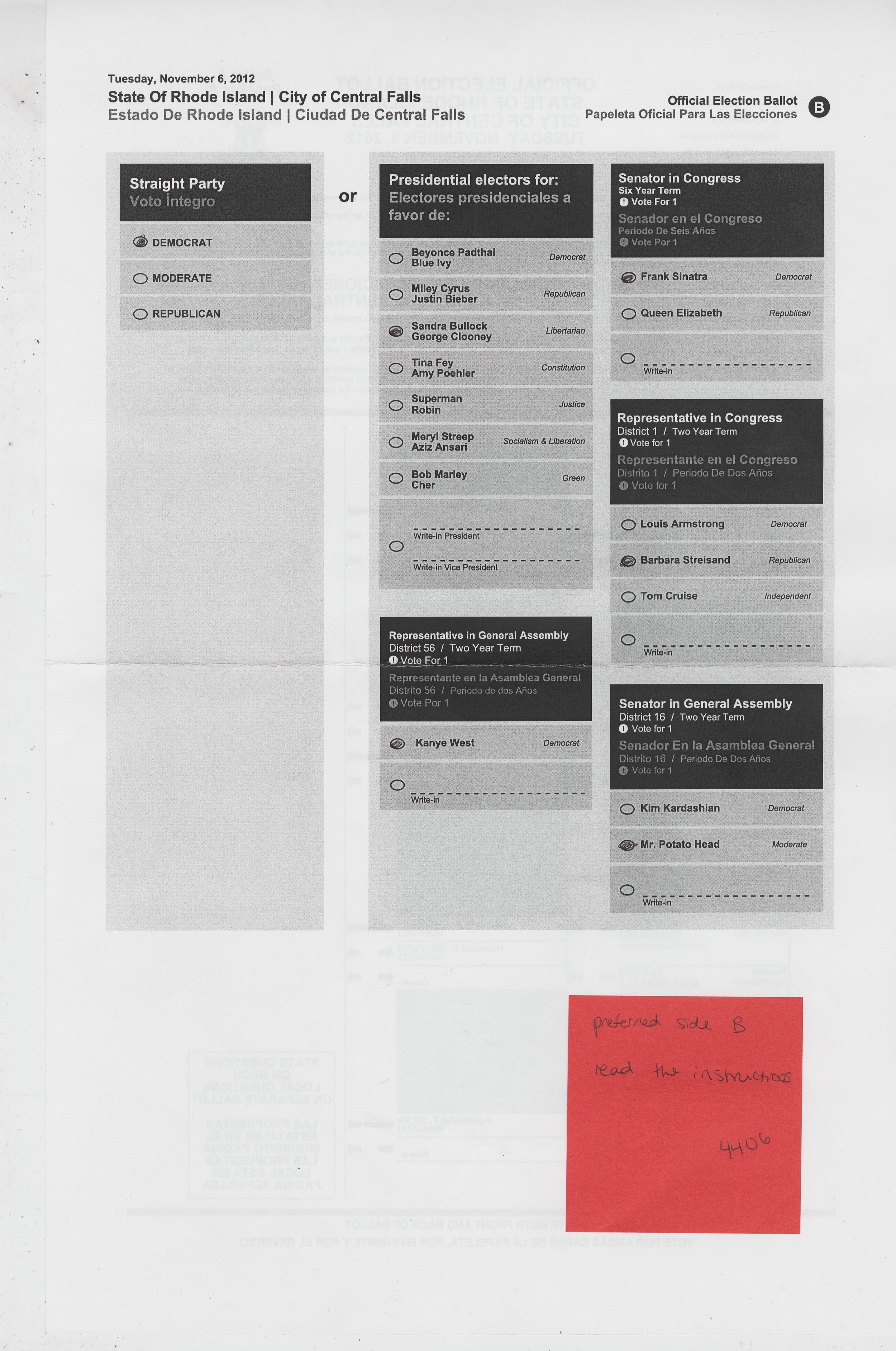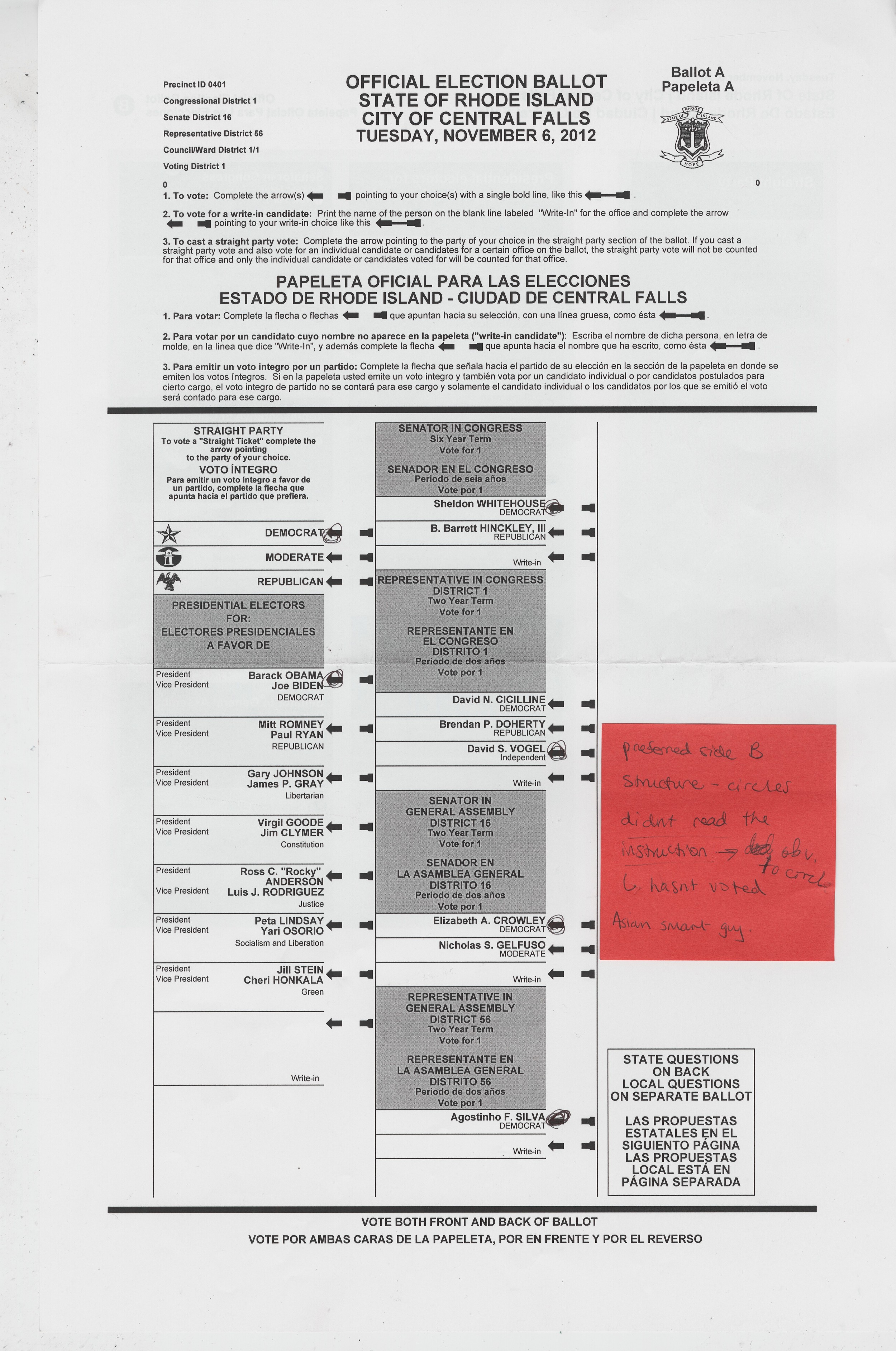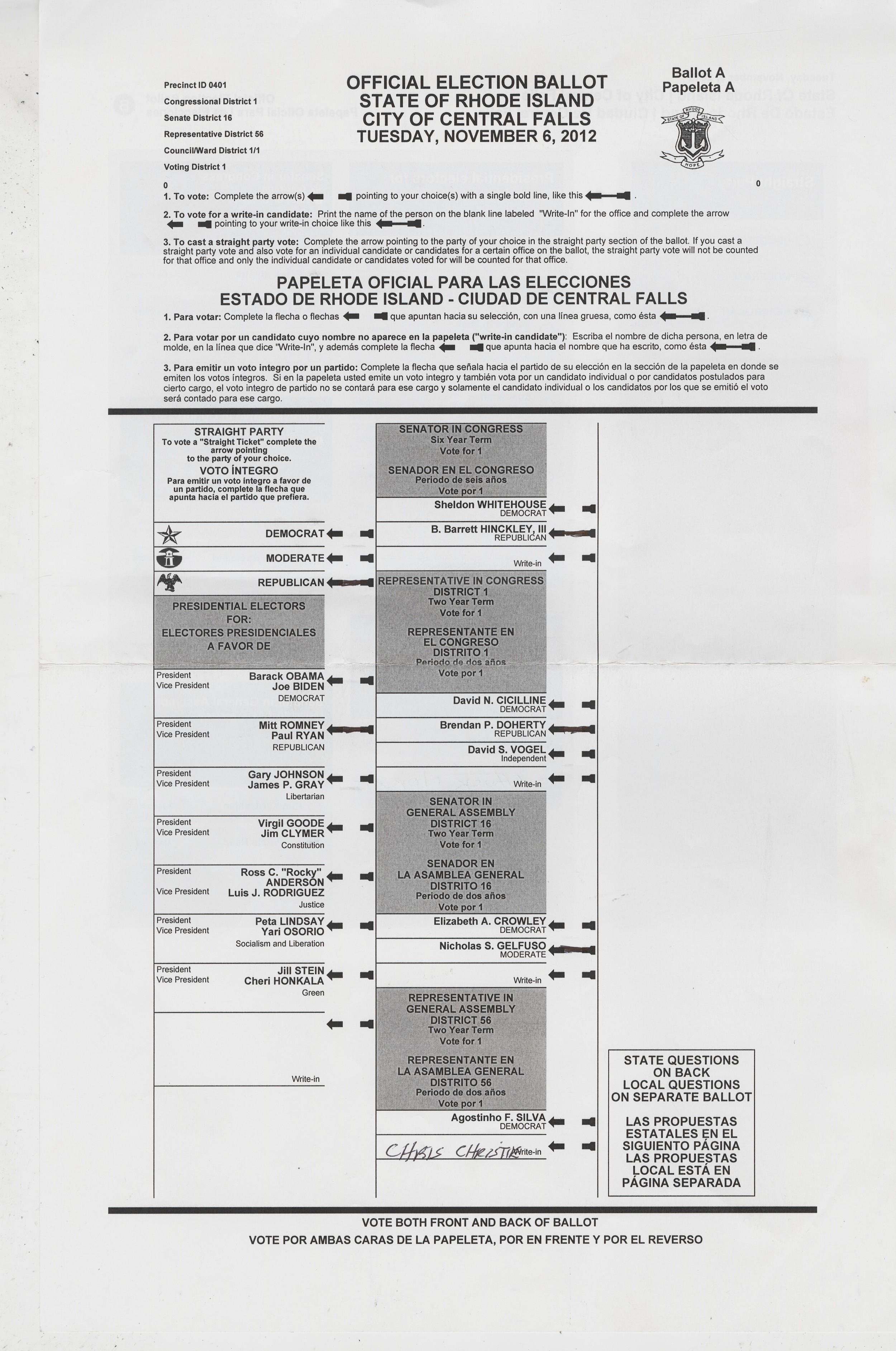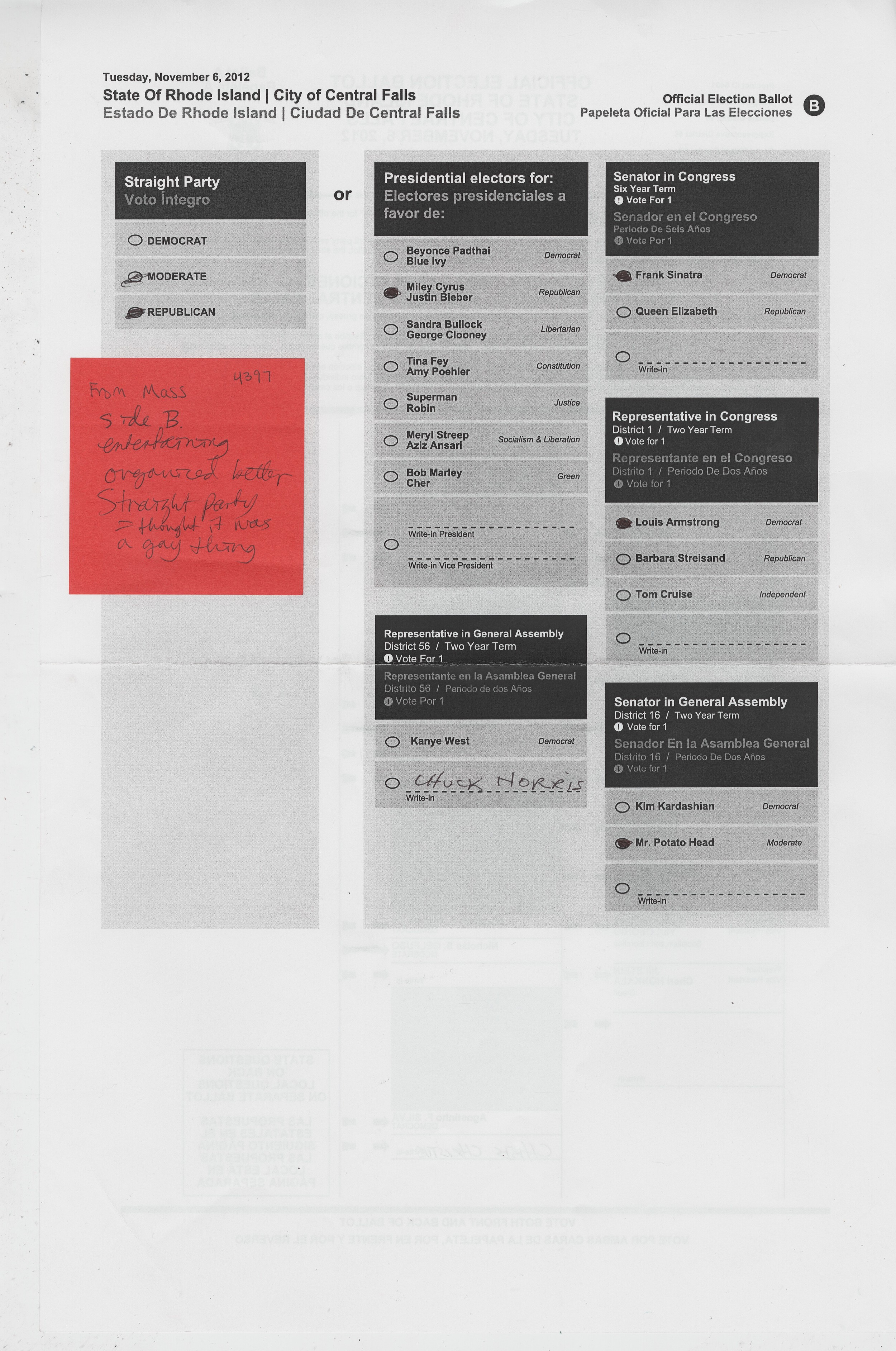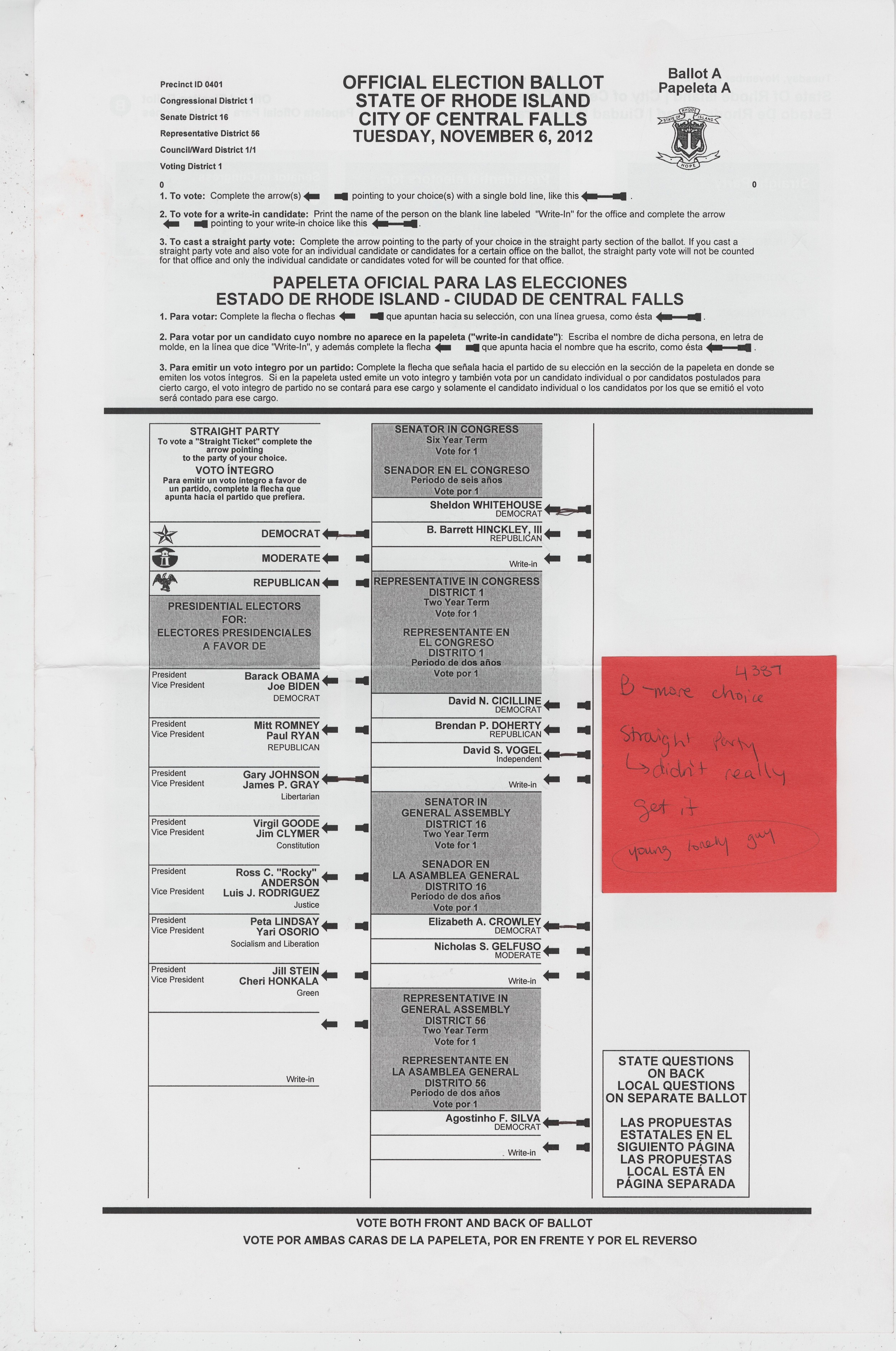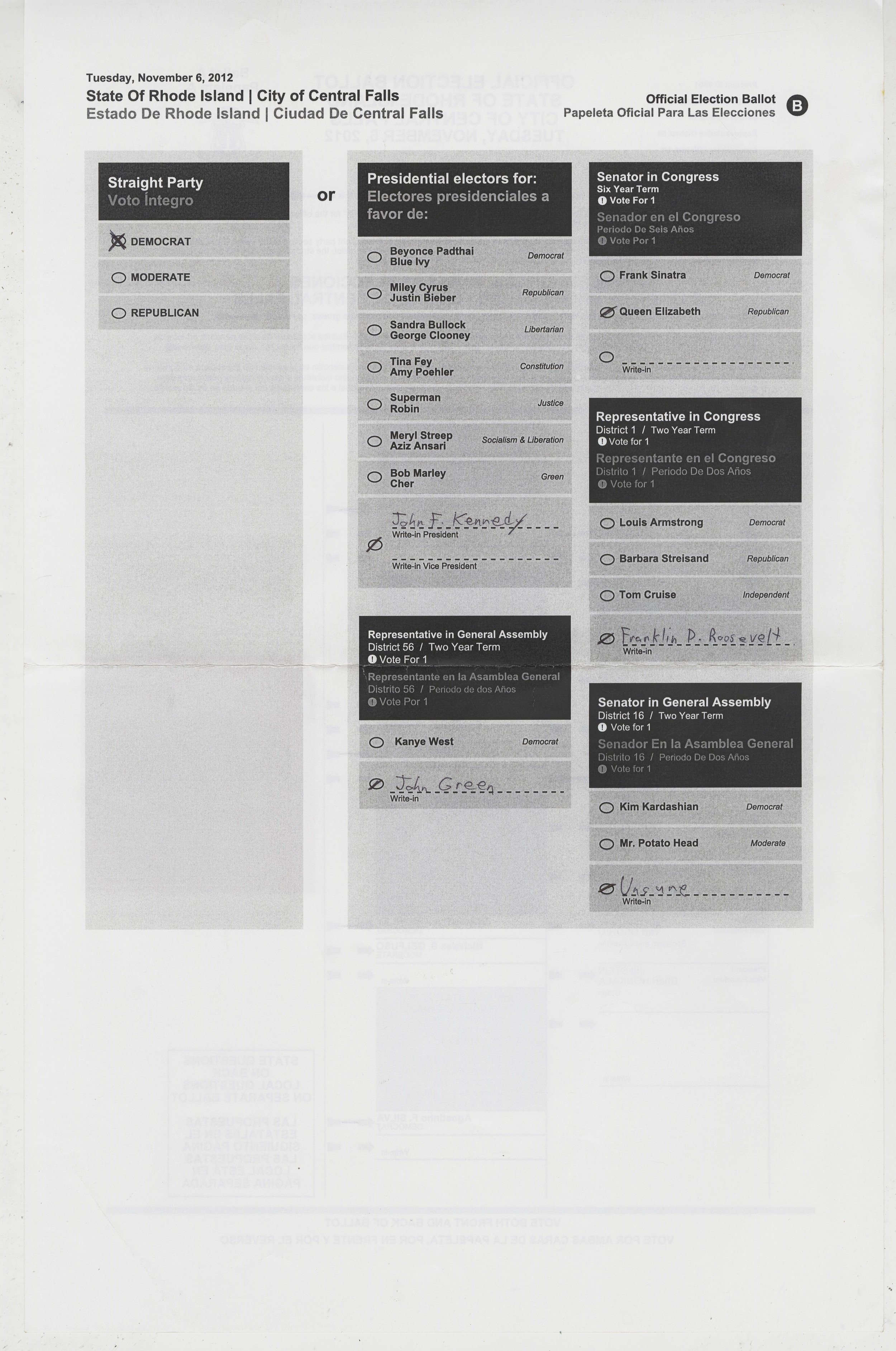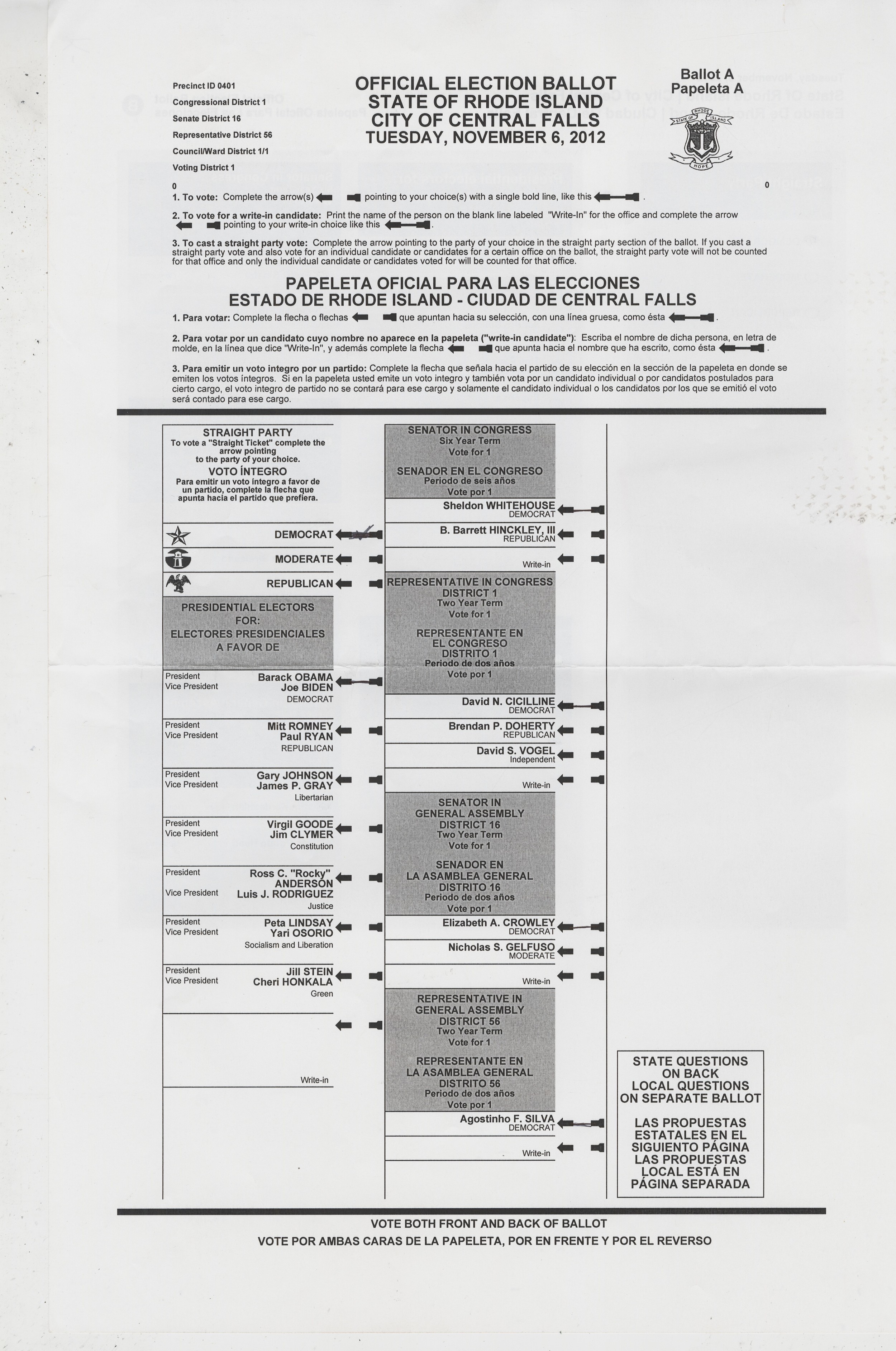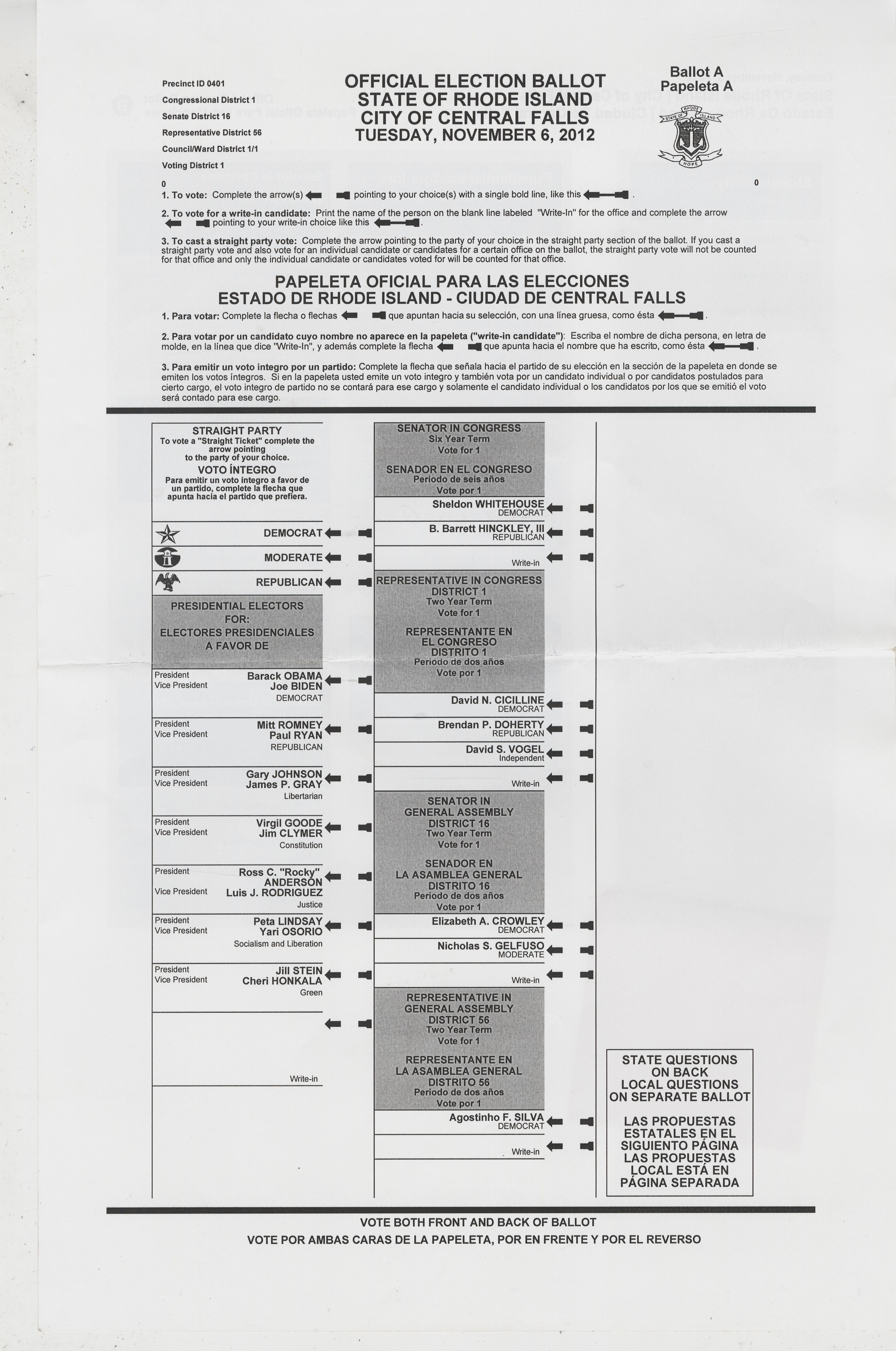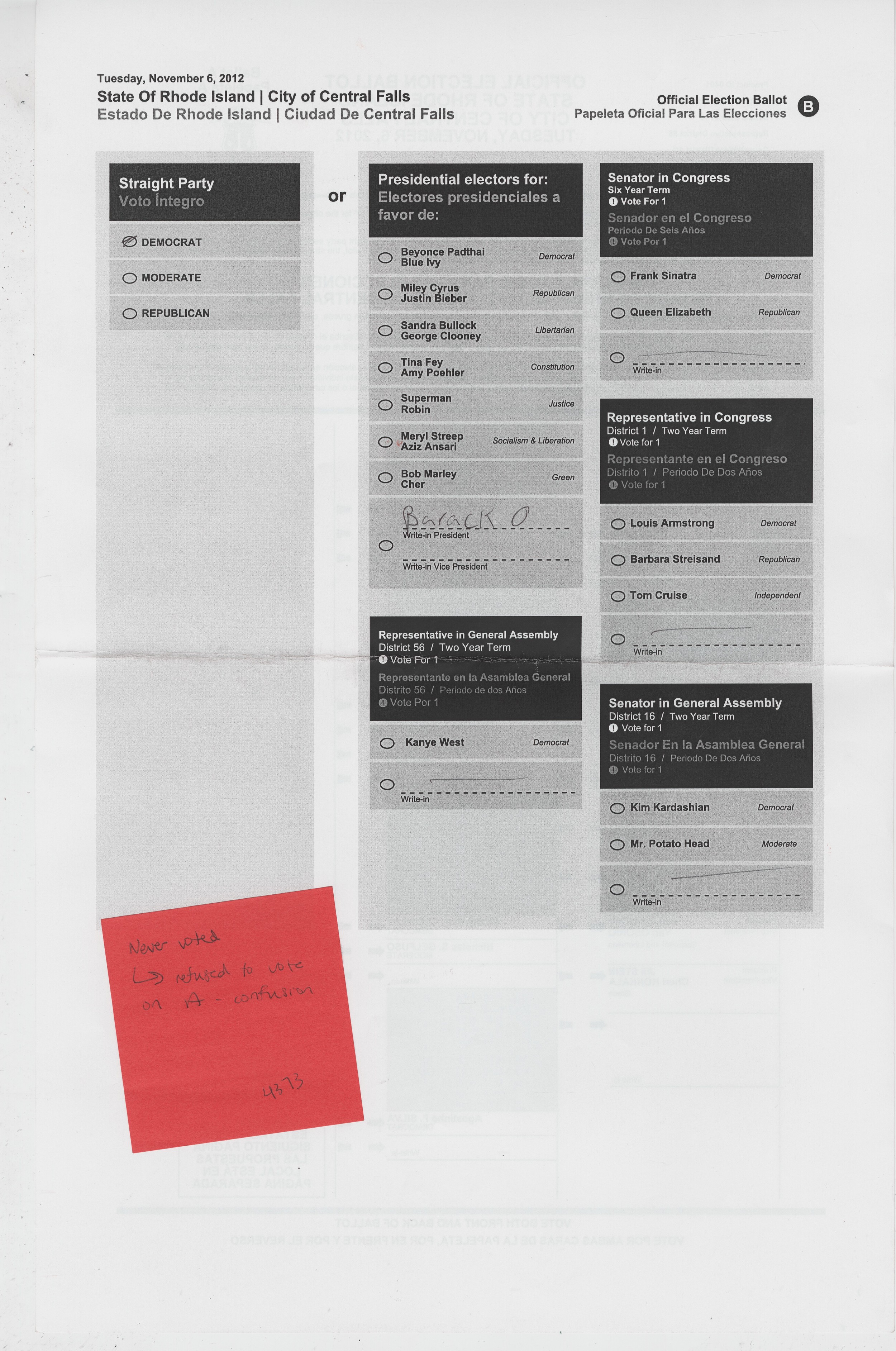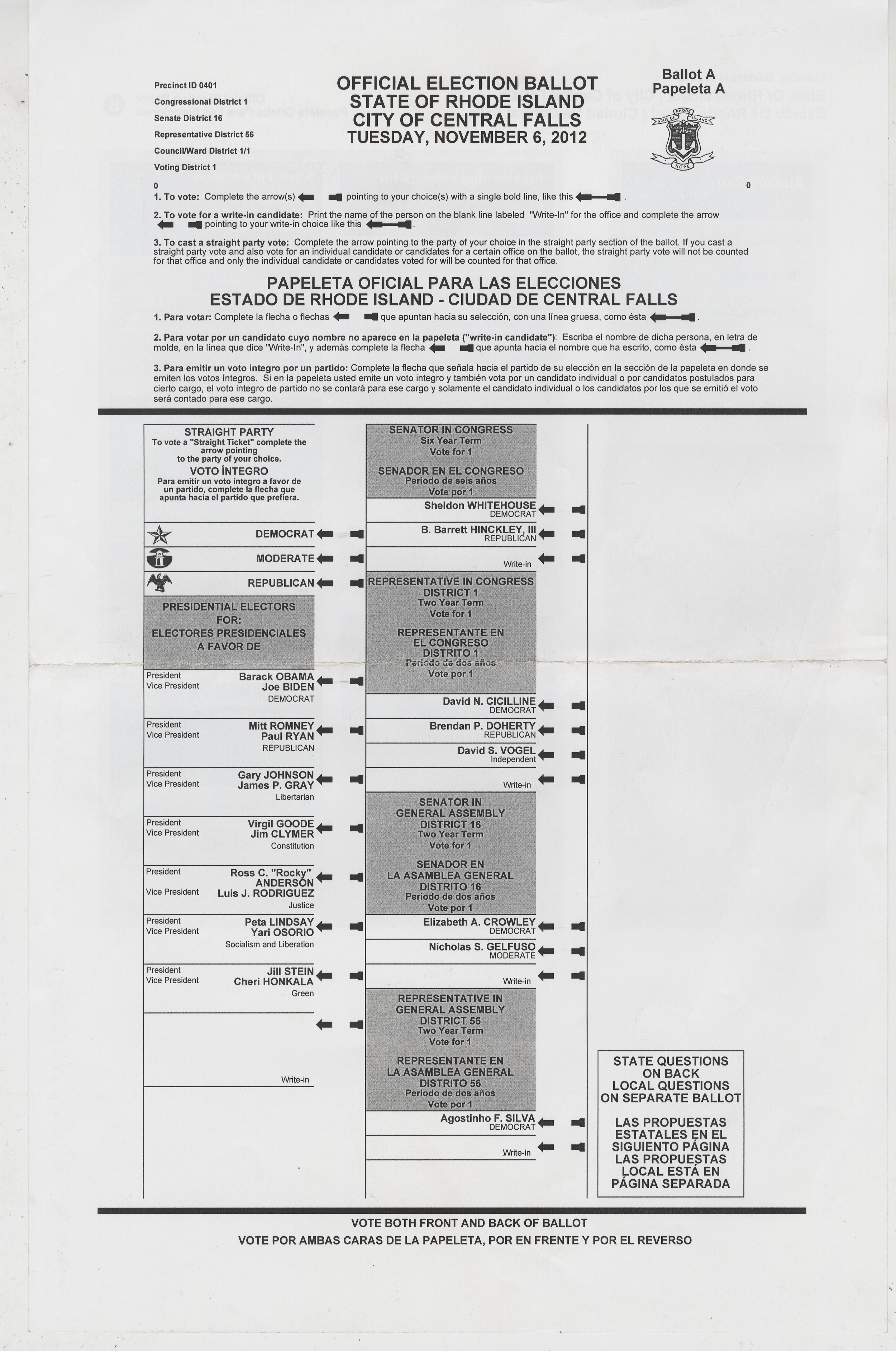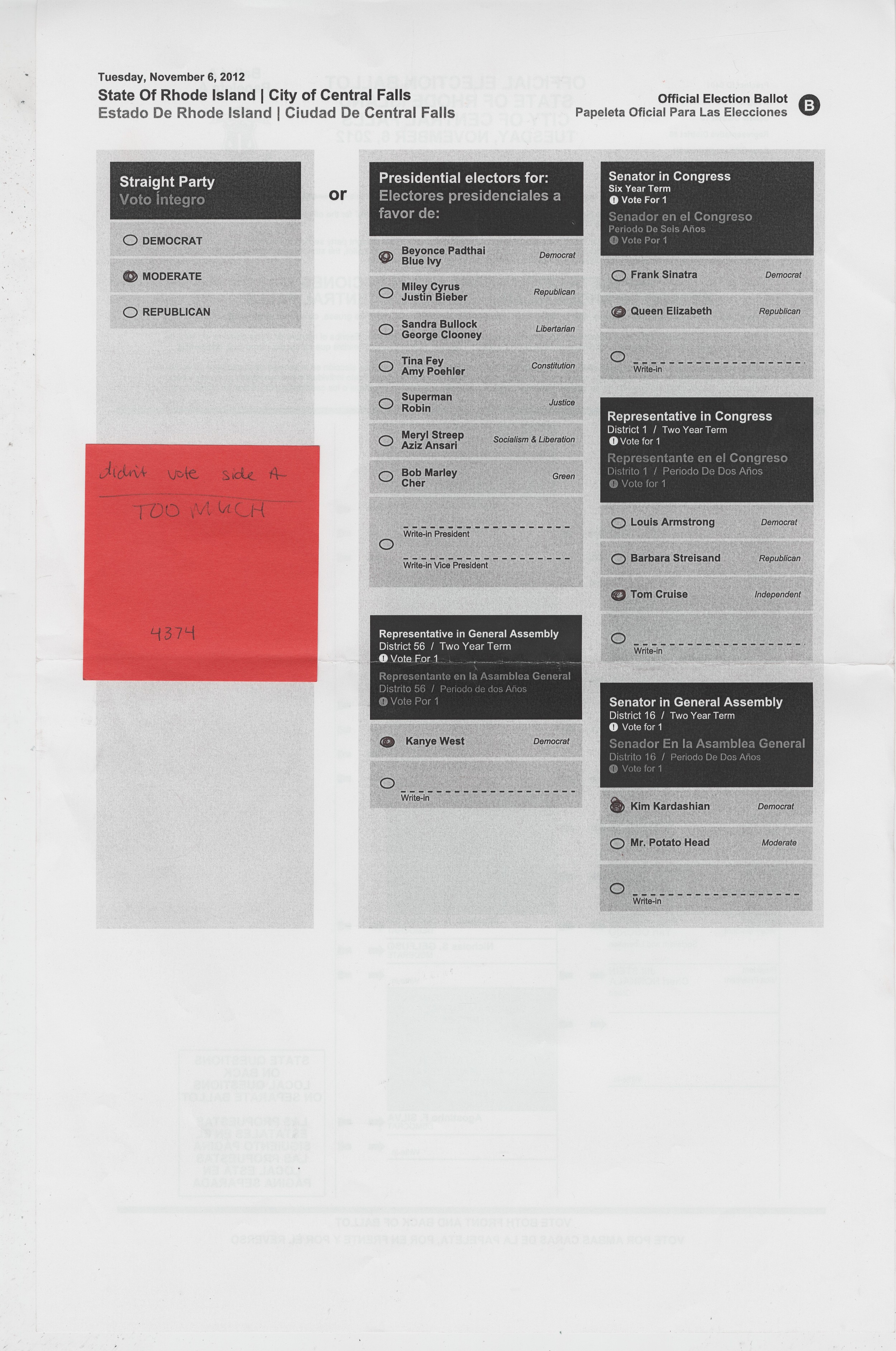Current Official Ballot of the State of Rhode Island:
Redesigning the Rhode Island Ballot - 2014
Rhode Island Public Radio interview
Most people don't consider the implications of ballots and elections from a design standpoint. However, the design and usability of a ballot can often have unforeseen effects on the outcome of an election. Clarity and functionality of ballot design is incredibly important in order to maintain fairness and reduce bias in voting outcomes.
In a three person team, we closely analyzed the Rhode Island ballot for existing design flaws and proposed two redesigns that we user-tested for functionality and clarity.
Current Ballot Design Flaws:
- The ballot's 'arrow system' is confusing for most voters
- The system for straight party voting is misleading
- The instructions at the top of the ballot are too condensed and hard to read
- Spanish and English language instructions are not well integrated
A. Modified Ballot Design:
B. Experimental Ballot Design:
Solution:
To address the design flaws, we proposed two new ballots to test in comparison with the original.
The first redesign, the "Modified Ballot Design", kept certain restrains in consideration. We knew that the Rhode Island Ballot scanners were programmed to recognize only the arrow voting system, so we maintained the arrows in this design. We also preserved the original text but restructured the layout and integrated the English and Spanish in a more cohesive way. We also made greater use of shading to simplify partitions.
In the "Experimental Ballot Design" we allowed ourselves complete freedom in the design process. We wanted to see if we could design a ballot that removed cumbersome textual explanations and was simply intuitive. This included a simplification of the straight party vote mechanism as well as using the more intuitive bubble system.
User Testing:
We asked participants to try our modified versions in comparison with the original RI ballot. Participants were given a double-sided ballot with the original as side A and one of our new ballots as side B. There were a few trends we noticed within the results as well as certain preferences the participants had.
Main Trends/ Voting Issues:
- Participants experienced information overload when confronted with the text dense instructions of the original ballot
- Participants often made incorrect marks like circling the arrows, using the "write-in" option when they had already selected a candidate, or not completely filling in the bubble
- Participants tended to "over-vote" or use the straight-party ticket selection incorrectly
Outcome:
- 75% preferred A (Modified Ballot) over the original ballot
- 88% preferred B (Experimental Ballot) over the original ballot
We presented our findings to the Rhode Island Board of Elections and representatives from the RI Secretary of State's office. They were eager to learn about how design can positively influence a voter's experience on election day and have been looking into implementing some of our insights towards their ballot redesign.

